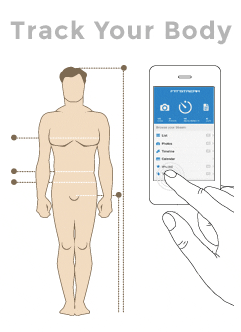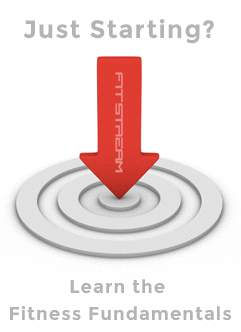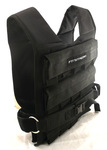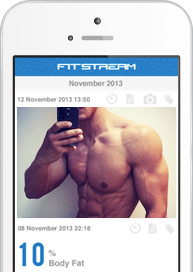Here we answer the most common questions about suspension trainers and suspension training for fitness. If your questions aren't answered here please email us at admin@fitstream.com and we'll add it to the list.
Contents of Suspension Training FAQ
- What is suspension training?
- What is a suspension trainer?
- Where should I start with Suspension Training?
- How do I setup a suspension trainer?
- What suspension training exercises are available?
- How many suspesnion training exercises are there?
- What muscles are worked when suspension training?
- How is suspension training so effective?
- What are the benefits of suspension training?
- How is suspension training different to ring training?
- Should I buy a suspension trainer or gymnastic rings?
- How does suspension training compare to ring training?
- Is suspension training safe?
- Where can I buy suspension trainers?
- Who will benefit from Suspension Training?
- Is suspension training suitable for beginners or people who are out of shape?
- How is suspension training different from other types of resistance training?
- Is suspension training good for rehabilitation and physical therapy after an injury?
What is suspension training?
Suspension training is a highly effective form of bodyweight exercise using fitness equipment called a suspension trainer.
Using a suspension trainer you perform various movements and functional exercises in a suspended state (with feet or arms on the trainer, lifted from the floor) to leverage your bodyweight as resistance.
You attach a suspension trainer to an anchor point (doors, bars, pull-up rigs, trees etc), grip the handles with your hands or hook your feet into the cradle and have the potential of performing hundreds of exercises for the entire body.
Suspension training builds coordination, muscle strength and helps tone the body. It's an extremely versatile and flexible training choice.
For more information please read our Suspension Training Guide or buy a suspension trainer from the Fitstream store.
What is a suspension trainer?
Suspension trainers are essentially heavy-duty, length adjustable straps with handles, that can be attached to an anchor point and allows you to exercise safely and effectively using your body weight for resistance.
Suspension trainers can typically be attached to a standard household door (without perfmanent fixings), rafters, beams, trees or any overhead stable fixture that you can wrap the trainer around.
The most popular single-strap Suspension Trainer available today is the TRX, pictured in the breakdown image. The TRX Suspension Trainer available to buy from Fitness Anywhere.
Where should I start with Suspension Training?
To begin suspension training all you need is a suspension trainer and somewhere to anchor it (like a door, beam or tree).
In the Fitstream exercise database you'll find a list of suspension training exercises with instructions and illustrations. Start with 5 to 6 exercises that are suitable to your fitness level and do a single set of each working at 10 - 12 repetitions, concentrating on perfect form.
You can begin with basic exercises like suspended squats, bicep curls and chest presses. If you are a beginner you will be surprised at just how effective these can be!
Once you have mastered the basics you can introduce more advanced exercises like the suspended crunch or supine pull-through or increase the number of exercises and volume of the workout in terms of number of sets and reps. There are literally hundreds of possible exercises suitable for people of all abilities so you will never be short of a challenge.
See the Fitstream exercise directory for more information and examples.
How do I setup a suspension trainer?
Suspension trainer setup is dependent on the type of trainer you buy, but many of them work in a similar way. A good suspension trainer is portable, can be rigged up in seconds and requires no permanent fixtures or fittings to use.
Most trainers typically follow the same design pattern, either by fixing to a standard household door (by passing a door anchor over the door the pulling it shut) or to a beam, bar, or pole of some kind by threading the suspension trainer around the fixture and using the carabineer to secure it in place.
The trainer will typically have a length adjustment system in place to allow you to quickly vary the length of the straps as appropriate to the exercise at the time.
Check the Fitstream Equipment section for our list of available suspension trainers with product reviews.
What suspension training exercises are available? / How many suspesnion training exercises are there? / What muscles are worked when suspension training
Suspension training offers hundreds of different exercises that can target every muscle group in the body, giving you a total body workout with a 2lb piece of equipment that can be thrown in the bottom of your rucksack.
Also, by varying the angle at which the suspended exercises are performed you can easily control the intensity of the exercise.
Suspension training is particularly effective at training the core body and abs, as the torso is heavily engaged when trying to sustain balance and control the unstable movement. However, you can also use a suspension trainer to effectively target specific muscle groups - the lower body (e.g. one leg squats, hamstring curls) and upper body (Chest press, bicep curl, triceps extension).
If you're looking to develop your core body and abs and are tired of repetitive and monotonous crunches then a Supension Trainer might just be what you are looking for. Look up the Suspended Crunch for one of the best ab exercises available.
Visit the Fitstream exercise directory for suspension training exercises and step-by-step instructions.
How is suspension training so effective?
Suspension training is effective because it's scalable to the fitness level of the individual and offers a challenge to people of all abilities. Each exercise is carried out in an unstable state and the muscles of the body work to keep the movement under control. The independent mobility of the trainer forces your body to stabilise itself and increases muscular recruitment throughout the body to do so.
With the use of a suspension trainer you can put your body in unusual positions that simply wouldn't otherwise be possible, and this requires significant strength to perform resulting in exceptional physical development.
What are the benefits of suspension training?
- Train the entire body and build total body strength
- Unparalleled core conditioning and abdominal workout
- Hundreds of possible suspension training exercises
- Easily scalable for people of all fitness abilities (by changing the length of exercise straps and altering the difficulty of the exercise)
- Simple setup and portable
- Great for travelling. Your workout's never have to stop (light, portable, easy setup)
- Perfect for people with limited room or money
- Safe and natural movements on the joints
- Develop a lean and defined physique
- Fun to do!
How is suspension training different to ring training? / Should I buy a suspension trainer or gymnastic rings? / How does suspension training compare to ring training?
We are a big fans of both suspension training and gymnastics rings training and incorporate both into our exercise regime. Each have their merits and whilst similar in some respects are fundamentally different in others. However, this is a question that many people have asked.
It depends on your goals, but to help you decide we have weighed up some of the pro's and con's of suspension training compared to ring training below:
Suspension training:
- Suspension trainers allow you to train your entire body whereas ring training focuses primarily on the upper body.
- You can train anywhere with a suspension trainer, it's great for rigging up to doors, so you can train in and around your home or in your hotel room. Compared to rings, which are still as portable but require a suitably high overhead structure from which to safely mount them.
- Suspension training is more easily scalable and accessible to people of all abilities including beginners although rings offer a fundamentally more difficult workout and therefore more difficult to the beginner.
Ring training:
- Gymnastic rings allow you to perform ring dips and pull-ups. Two of the most effective bodyweight exercises available. These exercises aren't really possible using a suspension trainer.
- Since ring training is more difficult than suspension training the physical demands placed on the body are greater and therefore the physical development is more effective too.
- Gymnastics rings are more suitable to advanced fitness levels.
Generally, we would recommend ring training for the more advanced users as it requires significant strength to perfom, and suspension training for people who want a whole body, portable exercise tool (it really is effective at training the lower body) or need something that will allow them to train on the road.
For more information please read our suspension training or ring training guide.
Is suspension training safe?
Absolutely. In fact, it is safer than many other forms of training because of the free mobility of the handles on the suspension trainer there is no fixed path of motion when working out. As a result it's extremely kind on the joints and allows them to follow their natural path. Once the trainer is securely setup and the immediate area is free from obstacles you're ready to go.
As with all exercise we recommend that you consult with your physician before undertaking any of the forms of training described.

Where can I buy suspension trainers?
The most popular single-strap suspension trainers are made by Fitness Anywhere who offer a product called the TRX. Developed by a former Navy SEAL that wanted a way to stay in shape whilst on missions it was first created using a few lengths of parachute webbing hand-stitched together.
Today the TRX is a bodyweight-based portable training tool of excellent quality and craftsmanship that builds strength, flexibility, balance and core stability for people of all fitness levels.
Now there are a range of suspension trainers available, from single-strap designs like the TRX, to dual-strap bodyweight trainers like The Human Trainer.
Check the Fitstream Equipment directory for our list of available suspension trainers with reviews, accessories and exercises.
Who will benefit from Suspension Training? / Is suspension training suitable for beginners or people who are out of shape?
Anyone can benefit from suspension training as you have complete control over the bodyweight resistance level of the exercise just by altering the position of your body or the angle at which the exercise is carried out. This means your training could range from gentle rehabilitation right up to hardcore athletic training and physical development.
Suspension training can also be used to assist a number of exercises that are too difficult for many people to perform unaided.
How is suspension training different from other types of resistance training?
Traditional weight training often only targets one muscle at a time which is contradictory to the normal coordinated muscle effort used to complete most activities.
Focusing on muscles in isolation is more likely to lead to muscular imbalances, as well as overuse injuries. Suspension training allows for the use of multiple planes of motion and works multiple muscles and joints simultaneously.
Is suspension training good for rehabilitation and physical therapy after an injury?
Many physical therapists are currently using suspension trainers to help patients recover from injury. The scalable form of training, ease of adjusting resistance and functionality of using body weight make it a very powerful tool for this type of use.
More Suspension Training Questions?
If there is anything else you would like to know about suspension training and exercise you can contact us at admin@fitstream.com.
To see recommended suspension trainers available to buy see the Fitstream Store.











